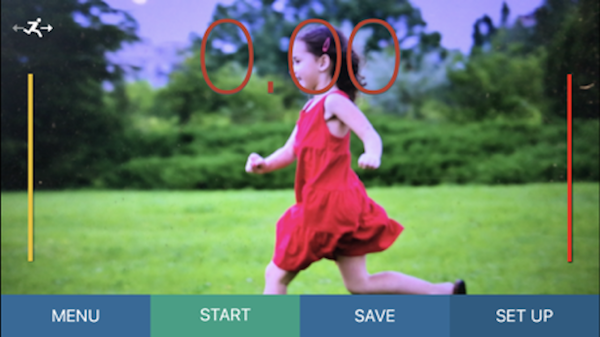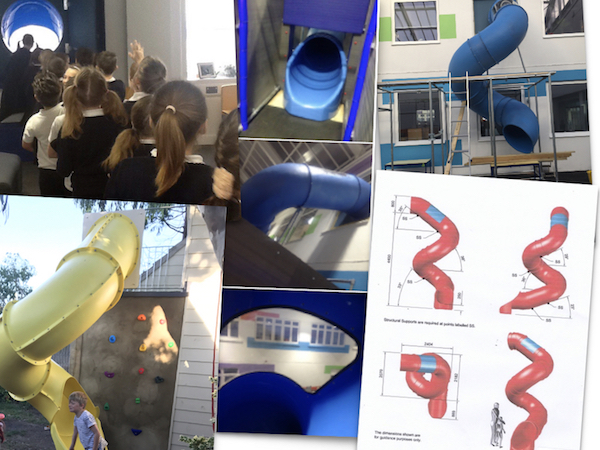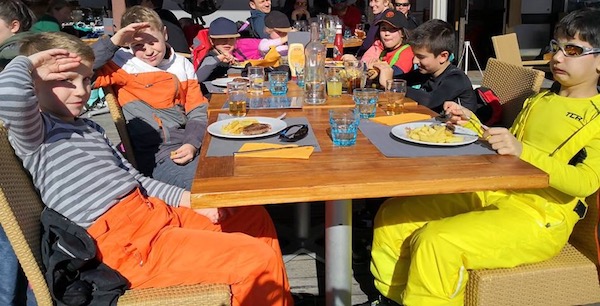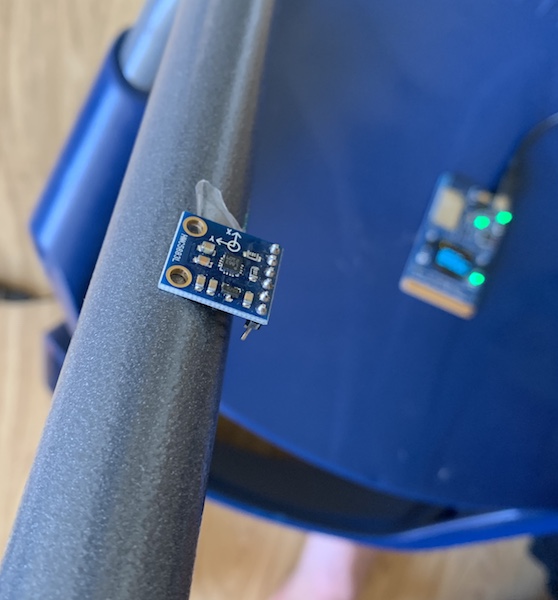
I suppose that at its (very very simplified) simplest, movement matters to learning because you only have the one heart and if it is pumping oxygen rich blood around your body in a lively way, then that gets to your brain as well as to your muscles. Thus, moving is good for thinking. Of course, it's WAY more complex that that, but the conclusion remains.
Everything here applies to office spaces and home-working spaces too, of course.
And as you will be aware from our long running Learnometer work, this is only one small marginal gain; in practice, Learning learns from sport that the aggregation of marginal gains will bring really substantial improvements. So, BYOP, lighting, etc all count and together the whole lot make a substantial difference to behaviour, engagement, cognitive attention and much more.
Discussion of movement is immediately controversial - a few schools impose a sit-still-and-listen or sit-still-and-work regime which sadly, whatever the rights and wrongs of the protocols, will impede learning and potentially derail engagement. Bluntly, this is unhelpful if you are seeking the best cognitive performance:

The research evidence is encouragingly unequivocal. Below is a simple graph from a long term study published by VS furniture in Germany. Class C who move within lessons have better attentiveness that Class B who move bewteen lessons, and way better that Class A who stay put, at their desks, as teachers come to them. The vertical axis is attentivenesss, the Y axis is time:

Of course, many teachers are very familiar with a literature supporting the positive impact of movement on children where they have various learning challenges (a good reading list for these is at p68 of this dissertatio) but movement brings positive outcomes for all students.
The health gains are considerable too:
Spending much of the day sitting in a chair increases risk of type 2 diabetes, heart disease and more. For girls / women, proplonged sitting increases cellular ageing (it impacts the caps at the end of our DNA that protect our chromosones). A study in 1950s found that bus drivers - who sit most of the day - were twice as likely to have heart attacks as bus conductors (who used to walk around the bus collecting fares). In a recent randomised control trial 146 NHS emlpoees were either given adjustable standing-desks, or simple as conrol carried on working as before. Over 12 months the standing cohort reported being less anxious, more engaged with their work and less tired. Simply standing up increases metabolism and sugar is cleared from blood quicker than sitting down.
Teachers might think it's OK because during breaks much running around might occur. But it is not possible, unless you go beyong 40 minutes daily of vigorous exercise, to undo the damage of long periods sitting down. You need to get up, and often.
A study by Dr. Chuck Hillman at the University of Illinois looked at the aggregate fMRI scans of 20 students who, prior to a test were encouraged to sit still, gather their thoughts and reflect vs a group of 20 who remained actively moving, walking before the test began. You can see the diffeence in resultant brain activity here. Test results reflected the greater brain activity, unsurprisingly. The data representtion thresholds were consistent across the two aggregate images, but the image is used and often misused often enough to not put too much faith in. It's indicative, at least.
So, what can be done to get to promote movement, within a behaviour code?
Standing desks, or worktop surfaces are an obvious furniture tweak. But also Zoning the class is effective - perhaps four zones: (1) collaboration, (2) silent research, (3) direct instruction or student presentation and just (4) heads down individual working can be signified by layout + the FF&E, but also by a carousel of activities that involve time spend in each zone. Different contexts, teachers and children will suit different mixes. Direct instruction or student presentation works well on tiered seating (even here, there is activity in getting seated) and the close facial contact is pedagogically effective - plus this clears a lot of floor space for other zoned activities and some movement.
As ever, discuss approrpriate behaviour protocols with everyone involved.
You need behaviour protocols for each zone, of course. We were surprised that when we intoduced Family Learning Tables (12 to a table) the children invoked and policed a "no talking" protocol and found it an ideal setting for heads-down individual working. Some popular zones (eg Harkness Tables) come with their own protocols for dialogue of course.
Tiered seating - often added to spaces for direct instruction or other focussed activity involves a bit more climbing and activity - but don't try to do the whole lesson up there! Here they are also using it for quiet individual reading. Get zoning.
Playground and outdoor activities. There's much to say here but simple ideas to encourage play and play based learning are numerous. A few of my favourites would include using AR to measure who is the fastest runner - great on playground duty and easy with a smart phone

Playground dance floor - a simple semicircle on the playground with a weatherproof Bluetooth speaker and whoever is on playground duty - or the students - get to broadcast their playlist - never fails to get groups dancing energetically. Angle the speaker downwards and the sound remains relatively constrained.
This climbing-frame library in Bangkok's TK Park adds quite an ambitious climb to the reading task - when I took this photo it didn't need to be posed, and "boys reading" in Thailand is often a problem. Not here.

In a similar vien I was pleased to be able to add a slide - safe and contained - to a library in Dorset (and indeed then a yellow one for my own garden at home!). Fun, of course, but certainly gets that oxygen rich blood flowing their arteries! And of course Google know this too - look at their offices!

School chairs are often pretty poor. As a rough guide the torso needs to be at an angle of 110°-120° - chairs usually impose a 90° angle which compacts the organs and restricts the flow of bllod (again, sigh). Children instinctively "slouch" to those larger angles.

One solution is to design chairs to better encourage these seating angles. Here's the solution we have gone for in our Learniture.co.uk work. Note the shorter seat squab which is less likely to dig into thigh backs and further reduce blood flow.

You might be interested to know that a combination of the Learniture and Learnometer teams are exploring - and have prototyped - smart furniture with stress gauges and more, to help learners understand the importance of their need to move, stretch, stand and somon:

I'm reminded by a helpful Twitter follower (thanks!) of important practical steps like havibg class wellies ready for outdoor wearing and in design terms having openings directly into the outdoor space.
That's probably enough to be going on with - the broad principle: keep them moving regularly, certainly within each and every hour..
Usually the students of all ages love the challenge of thinking about how this can work for them, and for you. We already know it works for their brains!
Here is a great learner led project - real student agency. Better behaviour, performance, wellbeing and health. It's a no brainer - or more accurately, a better brainer!
© prof stephen heppell - this page last updated on November 1, 2021 16:43